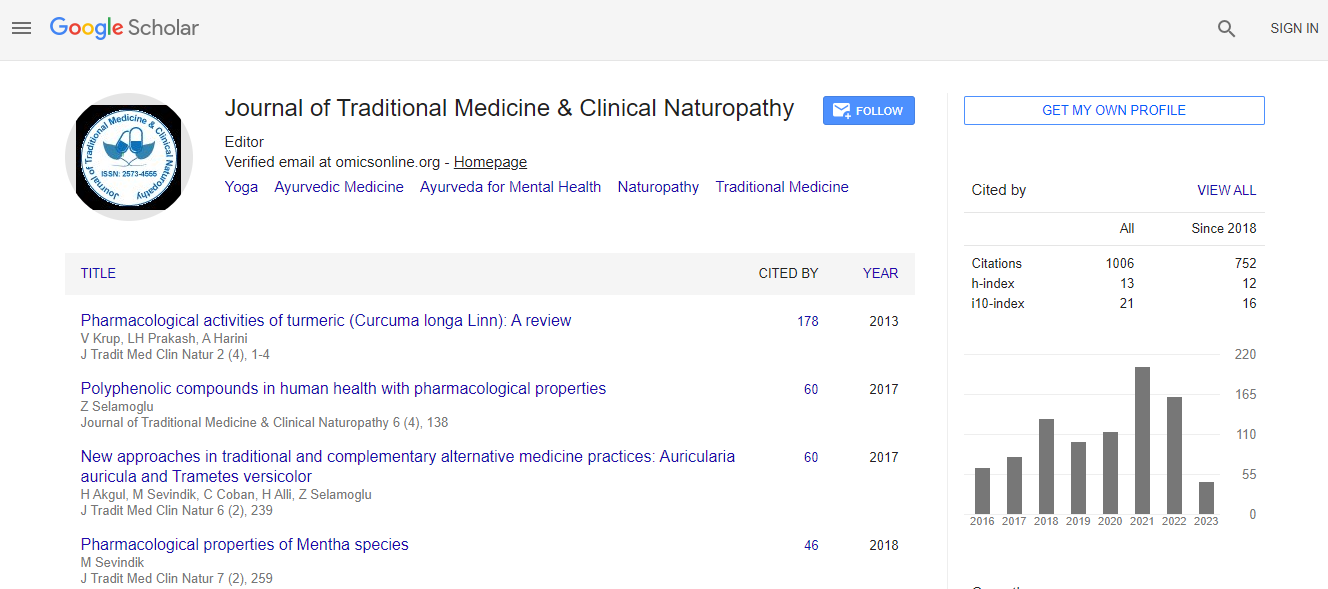The Metabolic Pathway of Medicinal Plants
*Corresponding Author:
Copyright: © 2021 . This is an open-access article distributed under the terms of the Creative Commons Attribution License, which permits unrestricted use, distribution, and reproduction in any medium, provided the original author and source are credited.
Abstract
Therapeutic plants, additionally called restorative spices, are found and used in customary medication rehearses since ancient occasions. Plants orchestrate numerous substance compounds for capacities including safeguard against bugs, organisms, sicknesses, and herbivorous warm blooded creatures. Various phytochemicals with potential or set up organic movement are distinguished. In any case, since one plant contains broadly different phytochemicals, the aftereffects of utilizing a whole plant as medication are unsure. Further, the phytochemical content and pharmacological activities, assuming any, of the various plants having restorative potential remain unassessed by thorough exploration to characterize viability and wellbeing. Phytochemical premise all plants produce synthetic mixtures which give them a developmental benefit, such as protecting against herbivores or, inside the case of corrosive, as a chemical in plant guards. These phytochemicals can possibly be utilized as medications, thus the substance and known pharmacological movement of these substances in therapeutic plants is that the logical reason for their utilization in current medication, if deductively affirmed. For instance, daffodils (Narcissus) contain nine gatherings of alkaloids including galantamine, authorized to be utilized against Alzheimers. The alkaloids are severe tasting and poisonous, and concentrated inside the pieces of the plant very much like the stem apparently to be eaten by herbivores; they'll likewise secure against parasites. Current information on therapeutic plants is being organized inside the Medicinal Plant Transcriptomics Database, which by 2011 gave an arrangement reference to the transcriptome of nearly thirty species. The most classes of pharmacologically dynamic phytochemicals are portrayed beneath, with tests of therapeutic plants that contain them. Alkaloids are unpleasant tasting synthetic substances, extremely broad in nature, and regularly harmful, found in numerous restorative plants. There are a few classes with various methods of activity as medications, both sporting and drug. Meds of arranged classes incorporate atropine, scopolamine, and hyoscyamine (all from nightshade), the quality medication berberine (from plants like Berberis and Mahonia), caffeine (Coffea), cocaine (Coca), ephedrine (Ephedra), morphine (opium poppy), nicotine (tobacco), reserpine (Rauvolfia serpentina), quinidine and quinine (Cinchona), vincamine (Vinca minor), and vincristine (Catharanthus roseus). Glycosides Anthraquinone glycosides are found in therapeutic plants like rhubarb, cascara, and Cassia augustifolia. Plant-based intestinal medicines made of such plants incorporate senna, rhubarb and Aloe. The cardiovascular glycosides are amazing medications from therapeutic plants including foxglove and lily of the valley. They incorporate digoxin and digitoxin which support the beating of the center, and go about as diuretics. Polyphenols of a few classes are boundless in plants, playing assorted parts in guards against plant infections and hunters. They incorporate chemical imitating phytoestrogens and astringent tannins. Plants containing phytoestrogens are managed for a long time for gynecological issues, similar to fruitfulness, feminine, and menopausal issues. Among these plants are Pueraria mirifica, kudzu, angelica, fennel, and anise. Numerous polyphenolic removes, for example, from grape seeds, olives or oceanic pine bark, are sold as dietary enhancements and beautifying agents without verification or legitimate wellbeing claims for advantageous wellbeing impacts. In Ayurveda, the astringent skin of the pomegranate, containing polyphenols called punicalagins, is utilized as a medication.

 Spanish
Spanish  Chinese
Chinese  Russian
Russian  German
German  French
French  Japanese
Japanese  Portuguese
Portuguese  Hindi
Hindi 
